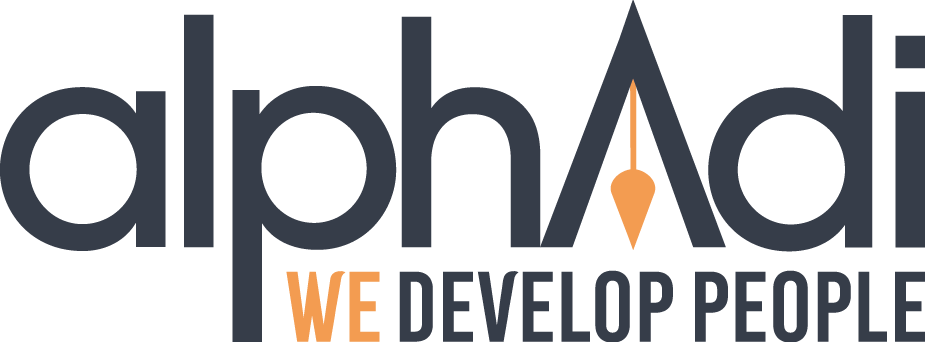The term correlation is used when two factors, such as characteristics, events, or data, influence each other or are dependent on each other, meaning they are in an interrelationship. Changes in one factor can result in positive or negative effects on other related factors. Therefore, it is important to identify these interrelationships in product planning and problem analysis to ensure quality. A correlation coefficient can be used to determine whether a correlation exists, its type (positive/negative) and its strength. A correlation diagramis one of the tools used for graphical representation.
Author: Alphadi Team
Jidoka
Jidoka is the operation of a machine without human supervision. When the machine detects a deviation from the standard, the process is immediately halted.
It was developed by Sakichi Toyoda, the founder of Toyoda Spinning and Weaving Company. At that time, many employees had to constantly monitor the machines in the factory. It took 20 workers to oversee 20 machines, which was too many. Toyoda invented the Jidoka principle to address this issue.
A mechanical component was installed in the machines to make them stop immediately when a problem occurs. This allowed fewer employees to oversee many machines. Error detection was simplified, and production costs were reduced. A machine operates according to the Jidoka principle when it automatically stops as soon as an error is detected.
Ishikawa Diagram
The Ishikawa diagram – also known as the fishbone diagram – is a tool for systematically identifying the causes of a problem (effect). The bones divide the causes into categories. Its one of the seven most important quality tools. It was developed by the Japanese scientist Kaoru Ishikawa.
Industry 4.0
Digital transformation brings new potentials to both the economy and private life. In this process, small and medium-sized enterprises (SMEs) are responsible for most of the innovations in the economy. SMEs can make decisions more quickly and play a key role in the implementation of Industry 4.0. The areas of action are smart services, smart factories, and smart products.
Implementation plan
The Implementation plan is used in the Improve phase of a Lean Six Sigma project and contains many small solutions to the influencing factors (levers) identified in the Analyze phase and tested in the Improve phase. The solutions (concepts) in the plan are categorized by their application and benefits, allowing the project sponsor to decide which concepts should be implemented. Additionally, risks, responsibilities, and the current status, along with a timeline for implementation, are documented. The sponsor continues to work through the Implementation plan with the team even after the project’s completion (handover). Often, additional “low-hanging fruits” identified during the Improve phase are also listed.
Hoshin Kanri
The company’s goals are broken down and agreed upon with managers on a monthly or quarterly basis. This is how the Lean Management tool Hoshin Kanri works. Hoshin means strategy. Kanri means steering or managing.
Hoshin Kanri may seem similar to a traditional top-down strategy that has been used in companies for decades. However, Hoshin Kanri is more comprehensive – it includes a Continuous Improvement Process (KVP) and tools that contribute to its success. Hoshin Kanri often fails when Step 2 is not executed consistently and everything is handled solely at the management level, as well as when the KVP process is not rigorously applied during ongoing execution.
Hypothesis Testing
Hypotheses are assumptions about potential relationships. A test is conducted to either support (null hypothesis H0) or disprove (alternative hypothesis HA or H1) a suspicion with data. Through the tests, you choose between the two hypotheses. The alternative hypothesis suggests that a significant difference exists, while the null hypothesis states that no difference can be detected.
Histogram
A Histogram is used for the clear presentation of large, complex data sets and facilitates the assessment of data distribution by organizing the data and determining process variation. Data that has already been collected is sorted into classes based on their target values and tolerance limits, all in the same unit of measurement. To determine which classes individual values should be assigned to, the range (R), the number of classes (k), and their width (h) must be calculated. The X-axis is scaled according to the class width, while the Y-axis, once all values are assigned to categories, shows the frequency with which each class occurs.
HEIJUNKA
Heijunka (Japanese for “leveling”) is a Lean management tool used to evenly distribute production capacity and systems, and to translate fluctuating customer demands into a consistent production structure. This involves creating production patterns for product variants over several stages. This is done, among other things, by setting production cycles and identifying suitable sequences. Heijunka focuses on aligning the process with customer demand, and therefore primarily considers customer needs to determine daily production quantities per product family. Important metrics include EPEI (Every Part Every Interval) and pitch.
Generic Pullsystems
There are various types of pull systems. We differentiate them based on their objectives into Replenishment, Generic and Kanban. There are additional types such as sequential pull systems and/or combinations thereof. When our main goal with a Generic pull system is to optimize or reduce inventory, we first gradually reduce the maximum inventory level through a Kanban calculation (kMin./kMax). Subsequently, we assess the feasibility of the product or service through a simulation using real data from the past and future.

